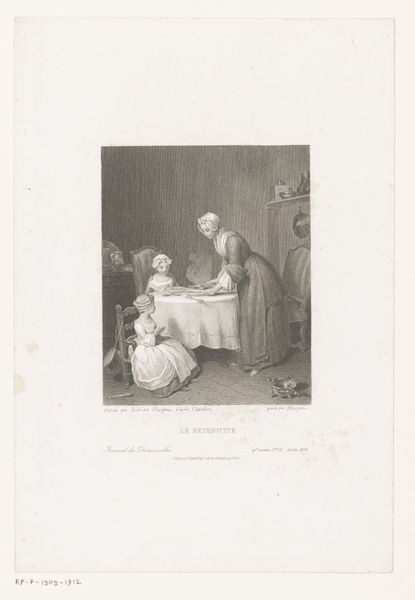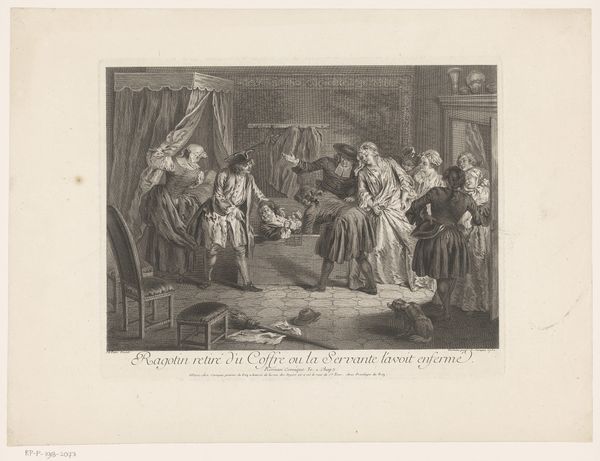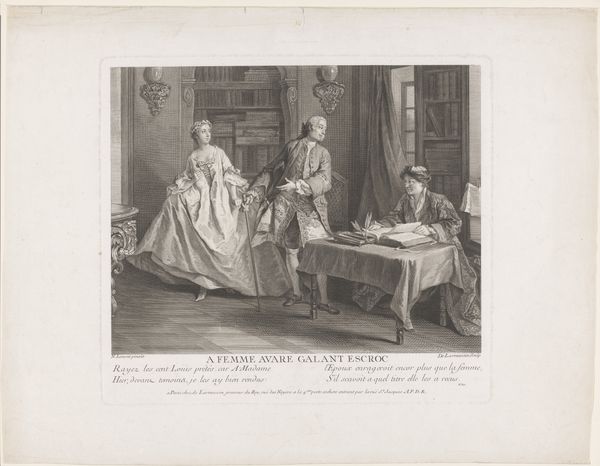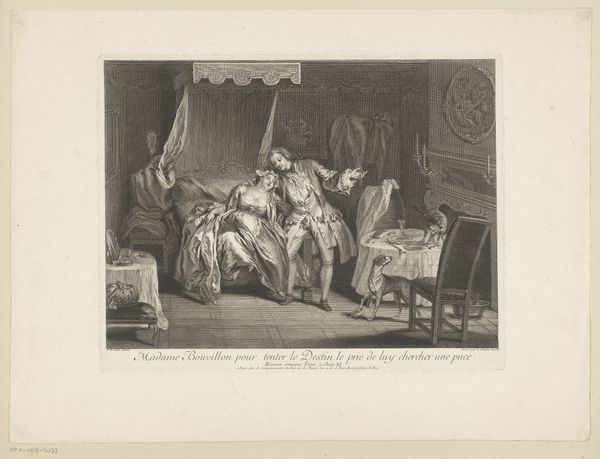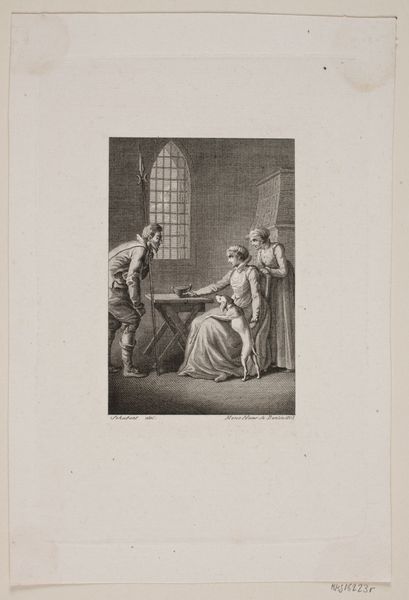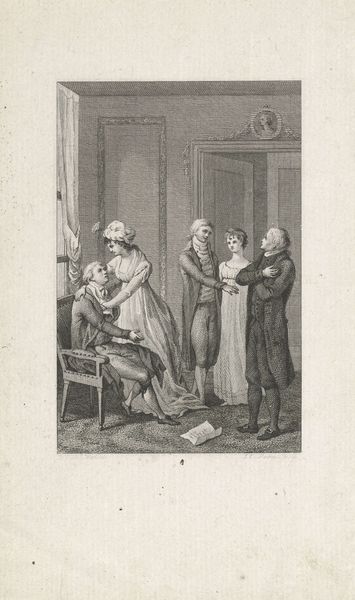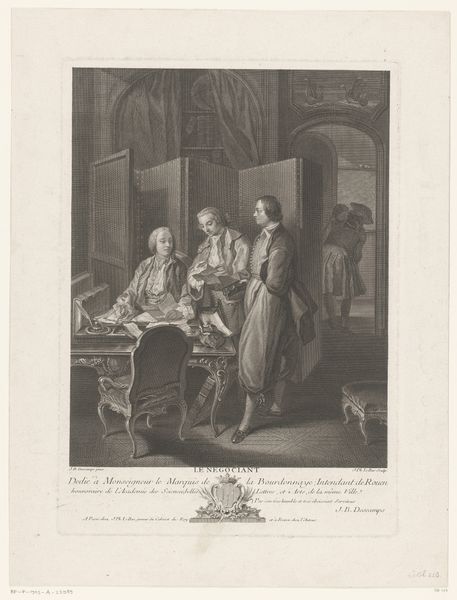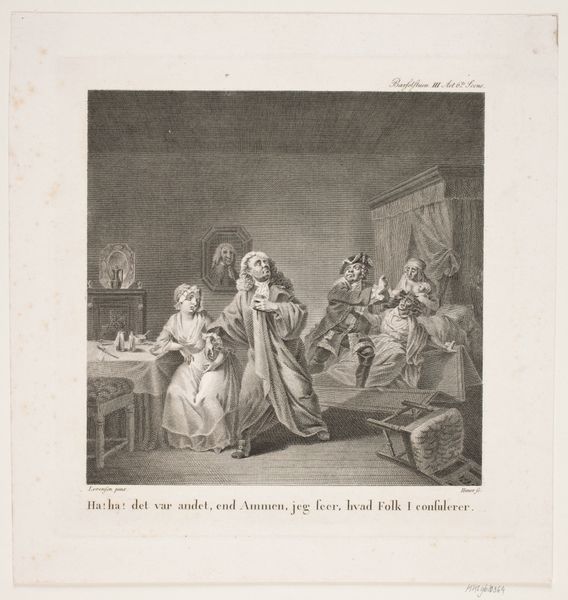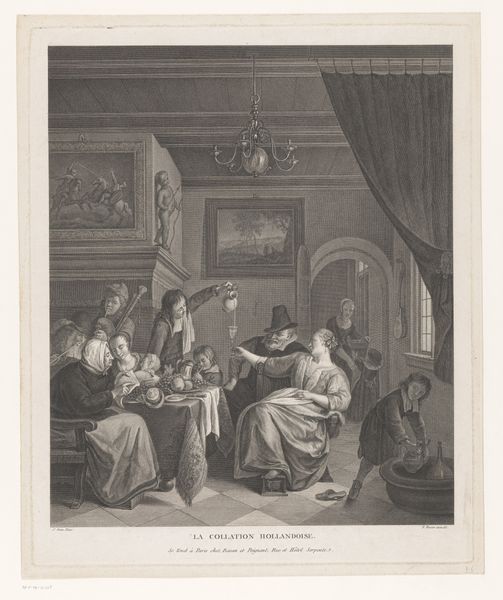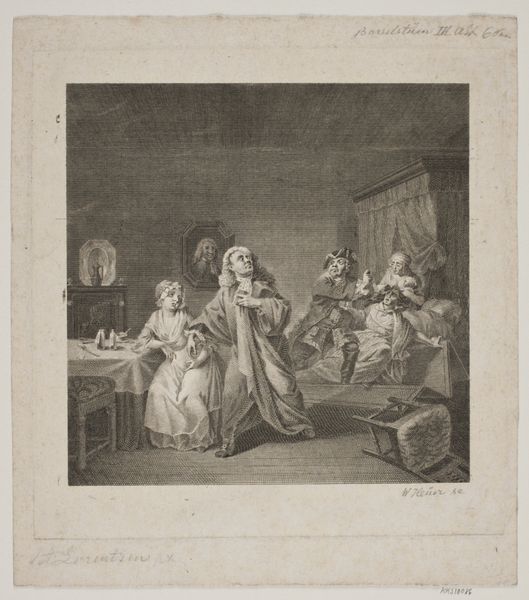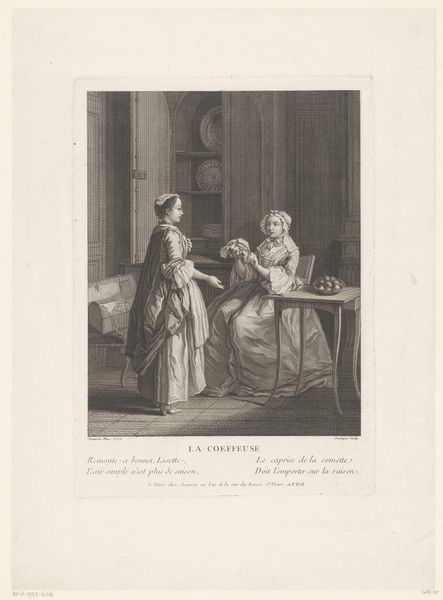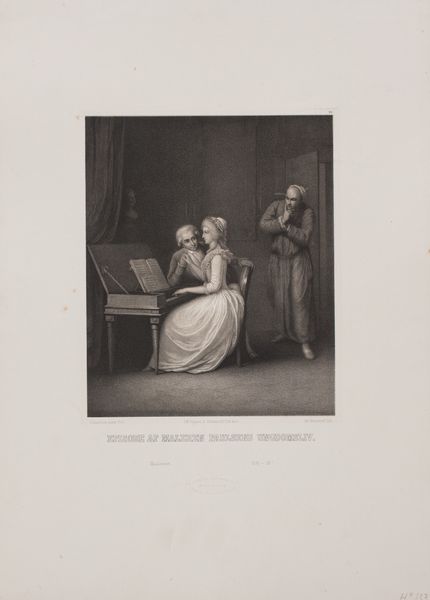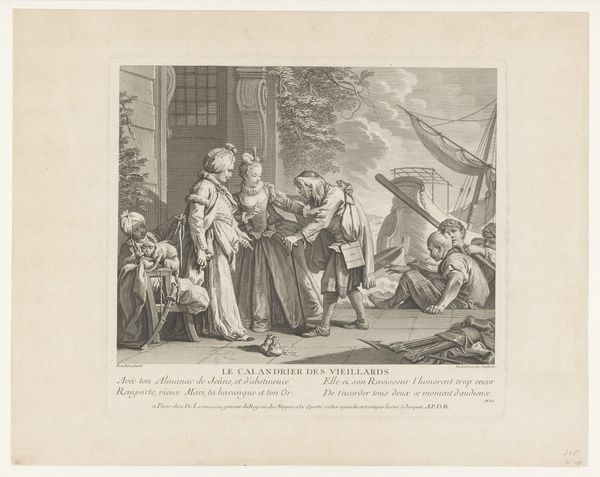
print, etching, engraving
#
portrait
#
baroque
# print
#
etching
#
old engraving style
#
genre-painting
#
engraving
Dimensions: height 380 mm, width 277 mm
Copyright: Rijks Museum: Open Domain
Editor: This is "Gezelschap aan tafel," or "Company at the Table," by Jean-Joseph Baléchou, created sometime between 1726 and 1764. It's an etching and engraving. There’s a stillness to the scene, everyone is rather composed at this gathering, although a server approaches with what looks like more wine. How do you interpret this work? Curator: Look closely at the production of this print, Editor. Notice the crisp lines achieved through etching and the areas of tonal depth provided through engraving. It’s crucial to recognize printmaking as a crucial industrial practice during the period. The image is disseminated, commodified, reproduced. Does this affect your understanding of it? Editor: It’s true, it changes things. Knowing it’s a print and therefore reproducible shifts the focus away from the ‘aura’ of a unique object, doesn’t it? It almost democratizes the scene depicted. Curator: Precisely! And consider *what* is being depicted. A seemingly everyday moment elevated to art through labor-intensive, reproductive techniques. Who is profiting from that labor, both artistic and domestic? Editor: So you’re suggesting we look beyond just the surface and consider the material conditions that allow both the making and the consumption of the image? Curator: Absolutely! Look at the details - the fashionable dress, the silverware, and question the labor behind it all. Consider who had access to these goods. Is this genre painting complicit in glorifying these power imbalances or critiquing them? Editor: It really makes you think about what’s included, what's omitted, and what choices the artist made, doesn't it? Thank you. Curator: Indeed. By considering the artwork as a product of its time and by examining the conditions of its creation, we can arrive at deeper understanding of not just the art object itself, but the society in which it circulated.
Comments
No comments
Be the first to comment and join the conversation on the ultimate creative platform.
